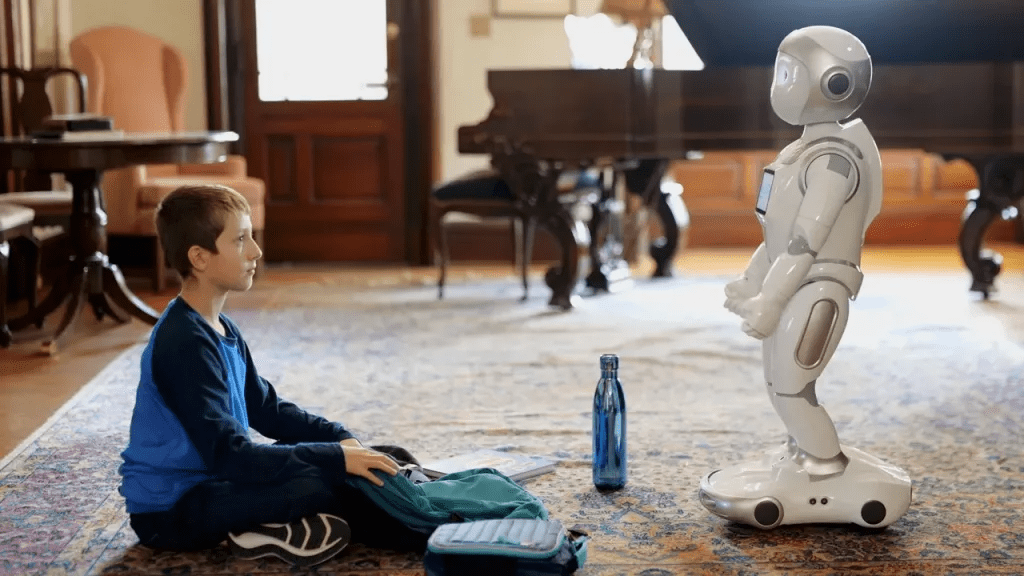Children with autism benefit from explicit teaching of social skills. Teaching social skills to children with autism is beneficial in preparing children to socialize with others starting at an early age. Essentially, children are taught to identify rules, behaviors, and habits that govern how people relate to others. They practice mastering them through explicit instruction.
How are Social Skills Different in People with Autism?
It’s important to keep in mind that all individuals with autism are unique and have their own skill sets. That being said, the majority of individuals with autism will tend to have a relatively limited social awareness, compared to neurotypical peers.
As children with autism communicate and socialize, they may do so solely through gestures or verbal cues. They may repeat a specific phrase or line or give a look or glance at another person. These actions can be misinterpreted or misunderstood by others, just as the child with ASD may not understand others’ actions, gestures, or phrases. But the child can be taught these nuances in therapeutic or educational settings with the goal of eventually recognizing them in other environments.
Another common challenge children face centers around their interaction with others in a complicated social environment. Children with autism might not be comfortable in one-on-one interactions with others. Their inability to process social information and communication in the same manner as neurotypical children can lead to confusion. These children often prefer to play alone rather than interact with peers. Because they do not communicate in the same ways as others, it’s frequently difficult for them to understand how and when to speak or respond to other people’s behavior.
Social Skills Interventions for Autism
While neurotypical children may learn by observing their environment, autistic children may not: thus the need for social skills intervention. Social skills interventions for children with autism consists of teaching the ways in which people communicate with one another. Trained professionals can differentiate instruction based on the child’s specific strengths and areas for growth. Interventions may include teaching how to communicate using pictures and gestures, listening to and understanding speech, and following the “rules” in various social settings. Concepts can include emotional intelligence, verbal and nonverbal communication, and interpersonal interactions such as how people greet one another or when to listen and respond in a conversation. Autistic individuals can learn to recognize others’ perspectives and to interpret subtle social cues. Learning these unspoken rules of communication can empower autistic people to contribute in a meaningful way with their communities. By providing a structured therapeutic environment, and with the help and support of trained professionals, autistic individuals can learn to interpret body language, tone of voice, and communication styles. Specialists can apply therapeutic approaches to teach these skills to autistic individuals to allow them to find more success independently.
Social Skills Activities for Autism
One example of an activity that can help children learn social skills and improve communication is sensory integration. Sensory integration uses the senses, such as sight, sound, touch, smell, and taste, to identify an object or person and place them within a larger context. Additional training methods include teaching life skills, such as performing physical tasks: cutting fruit or cutting vegetables, assembling a puzzle, cleaning up spills or messes.
It may also include activities that allow autistic individuals to interact and make friends with others. Children with autism often benefit from having a group of trusted friends who they can rely on to give them feedback and make connections between various aspects of their lives. Professionals in school settings often structure social groups with prosocial peers to practice these interactions in a safe, encouraging environment.
Robot-Assisted Intervention (RAI)
Studies show that children with autism can view robots as social beings. They are consistent, predictable and nonthreatening. Because of this, robot-assisted intervention is a perfect intervention tool for enhancing social skills training for autistic children. With robot-assisted intervention, an individual with autism can learn how to interact with others. It also provides safe opportunities for children to practice social skill development. Professionals can better meet children’s needs by incorporating robot-assisted social skills training for autism into therapy sessions or academic interventions. For more information on robot-assisted instruction on social skills training for autism spectrum disorder, MOVIA provides solutions to help children with special needs learn and grow using collaborative robotic technology. Contact us here today to learn more!
Takeaway: RAI Can Help Children Develop Social Skills
RAI can teach autistic individuals social norms of expressive and receptive communication in a safe environment. Autistic individuals can learn to embrace their unique style while recognizing others’. After all, it is only through communication that we learn to understand and relate to those around us. Therefore, by learning how to connect with others, autistic individuals can live a fulfilling life, participating in and contributing meaningfully to their communities.

